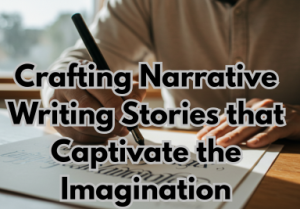Table of Contents
Writing has always been a part of human evolution. People have always written in some form or another. Nowadays, however, people read physical books less, and eBooks have taken their place.
Across various industries, writing is a fundamental and enjoyable tool for communication and final success. It’s about more than just pretty words on a page, it’s about shaping narratives, explaining complex ideas, and persuading audiences.
Whether for marketing, internal reports, or general content, every piece of writing serves a thorough function. The goal story is always to connect with the reader, providing clarity and purpose in a way that resonates.
In this blog from Lincoln Book Publishing who gives professional book writing services, we will discuss the types of writing. Join us on this beautiful journey.
How to Improve Writing Skills
Do you want to improve writing skills as an Expert writers? It’s more about a consistent, committed practice than it is about a magic formula. Similar to a muscle, it becomes stronger with continued use. Reading widely is the first and most important step.
Read more than what you currently enjoy. Explore a variety of writers, delve into different genres, and even take on some non-fiction. Simplify your language, eliminate superfluous words, and reorganize phrases for improved coherence. You’ll see that a phrase can frequently be replaced by a single, strong verb.
Lastly, ask for input. It’s difficult, but necessary. Join a writing club, establish an online community, or even share your work with a trusted friend. Whether it’s a repetitious thought or a perplexing language, others will see things that you cannot.
Pay attention to how a novelist builds a character, how a journalist structures an article, and how a poet uses language to evoke feeling. You’re not just consuming content; you’re studying the craft.Next, you must write often. Don’t wait for inspiration to strike; start. Keep a journal, write a blog, or challenge yourself to create a short story every week.
The more words you put on the page, the more comfortable you become with the process. Your first drafts will likely feel clunky, and that’s perfectly okay. The goal is to silence that inner critic and get your thoughts down. Once they’re there, you can start shaping them.
Revision is where the real magic happens. Go back to your work with a critical eye. Listen to their critiques, and use them to improve. Don’t be afraid to experiment with different voices and styles. An Expert writers aren’t someone who was born with a gift, they’re someone who relentlessly worked at their craft until their words finally began to sing.
Crafting Narrative Writing Stories that Captivate the Imagination
Narrative writing is the old art of telling a tales. It pulls you into a world, introduces you to characters, and follows them as they face battles and experience change. At its heart, a narrative needs a precise sequence of events, which raises the question: what happens next? It can be fiction, like a short story or a novel, where a writer builds an entirely new world from scratch.
It can also be non-fiction, like a personal memoir or a historical account that tells a true story. Good narrative writing doesn’t just list events, it builds a bridge between the reader and the characters, making you care about their journey. It uses a strong voice, creating a distinct feeling and rhythm that moves the story forward. You’re not just reading words; you’re living the tale.
Use Descriptive Writing to paint your words
Descriptive writing brings a scenery to life. Its whole purpose is to paint a vivid picture in the reader’s mind, appealing to all five senses (or maybe 6). It’s not about what happens, but about what something feels, looks, sounds, smells, or tastes like.
A good descriptive writer uses powerful adjectives and rich, provocative language to create an atmosphere so real you can almost touch it. This style of writing can capture a moment in time, from the way sunlight filters through tree leaves to the specific scent of rain on a hot summer day.
It’s often woven into other forms of writing, like narratives, to make the story more immersive and believable. The objective is to transport the reader, to make them a participant in the moment you are describing. It’s a snapshot, a memory, and a feeling, all captured in words.
Persuasive Writing that Influences Minds and Inspires Action
Persuasive writing is all about winning an argument, just exactly you do while showering. It’s the writing you use when you want to convince someone to see your side of an issue, adopt a belief, or take a specific action.
This style isn’t about simply stating an opinion, it’s about building a solid case using a mix of logic, evidence, and emotional appeal. You have a clear POV, and you present your arguments in a structured, compelling way. You anticipate counterarguments and address them head-on, proving your position is the strongest.
Whether it’s a political speech, a marketing email, or a letter to the editor, the purpose is always the same: to sway the reader. A great persuasive writer understands their audience and crafts their message to resonate deeply, turning a simple thought into a powerful call to action.
Illuminate Expository Writing with Clarity and Insight
Expository writing exists to inform and explain. It’s the kind of writing that gives you the facts without trying to tell a story or change your mind. The purpose is to clarify a subject and present information in a way that is clear, logical, and easy to understand. Think of it as a teacher guiding you through a topic.
It provides definitions, explains a process, or compares and contrasts different ideas. This style is found everywhere, from a simple recipe that gives you step-by-step instructions to a textbook that breaks down a scientific theory.
You won’t find inspirational appeals, soft or creative storytelling here. Instead, you’ll find a straightforward, objective approach, using precise language and organized structure. The only goal is to share knowledge and ensure the reader leaves with a full understanding of the subject matter.
Conclusion
Writing encompasses a wide range of skills, from telling gripping tales to explaining intricate facts. Every kind, be it technical, persuasive, or narrative, has a certain function in the workplace.
An expert writer is able to change styles to suit the demands of their readers.
Don’t limit yourself, then. Learn new skills, discover the type of writing that really makes your words sing, and investigate Lincoln Book Publishing’s professional book writing services. Your biggest value in this ever-changing industry is your versatility.
Frequently asked question
How Do You Start Writing a Book?
Starting a book is often the hardest part, but you don’t need a perfect plan. Just begin. Find a quiet spot, grab a notebook or open a blank document, and start with an idea, a character, a setting, a single line of dialogue. Let your imagination run wild in a messy first draft. Don’t worry about editing; you can fix it later. The goal is to build momentum and find the story’s rhythm. Once you have a beginning, the rest will begin to take shape.
What Is the Difference Between Academic and Professional Writing?
Academic and professional writing have different purposes and styles. Academic writing, such as a thesis or research paper, is formal and highly structured. It emphasizes presenting a well-researched argument and often uses complex language to demonstrate expertise. In contrast, professional writing, like reports or emails, is direct and concise. It prioritizes clarity and efficiency, aiming to communicate information quickly to help an organization operate smoothly. While academic writing shows your understanding of a topic, professional writing focuses on getting tasks done effectively.
What Is the Main Objective of Persuasive Writing?
Converting the reader from one point of view to another is the main objective of persuasive writing. It entails creating a compelling case to persuade someone to act or alter their mind by fusing reason, proof, and emotional appeal. Instead of just stating a viewpoint, a persuasive essay methodically develops an argument, foreseeing and explicitly responding to any counterarguments. The goal is to connect with the reader so strongly that they are compelled to agree with your viewpoint.
Why Is Technical Writing Important in Business and Science?
Technical writing is essential because it transforms complex information into clear and usable instructions. In the business world, it produces user manuals, reports, and procedures that everyone can understand, ensuring that tasks are completed accurately and efficiently. In the field of science, it documents research findings, protocols, and data, which allows for the replication and validation of experiments. Technical writing serves as a bridge between Expert writers and everyday users. Without it, innovative ideas and complicated processes would be difficult to access, hindering progress in both areas.

Author
Frederic Shah is a skilled copywriter and ghostwriter with a passion for crafting engaging web content and eBooks. With over 11+ years of experience in the industry, he excels at translating complex ideas into accessible narratives that captivate diverse audiences. His background in Computer Science equips him with a unique perspective, allowing him to blend technical proficiency with creative storytelling. Whether he’s developing persuasive copy or insightful eBook content, Frederic Shah is dedicated to delivering high-quality writing that not only informs but also inspires readers to take action.



